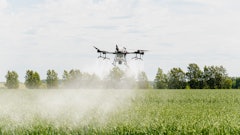Companies are starting to realize that returns do have a cost impact to the bottom line.
IS YOUR COMPANY missing financial and environmental opportunities by not better managing its returns process?
According to two experts from Inmar CLS Inc., Rodney Bias, vice president of regulatory and Rich Fanning, executive vice president of operations, many food and beverage companies are not reaping the benefits of a true returns program.
Food Logistics recently talked to Bias and Fanning about industry trends in reverse logistics. Based in Winston-Salem, NC, CLS is a leading provider of reverse logistics and supply chain management solutions.
A recent study from the Supply Chain Consortium found that companies do not measure their returns process with the same scrutiny they use for outbound distribution. Why don’t companies recognize the need for this type of analysis?
Fundamentally, food supply chain participants are more focused on forward logistics—getting the right product to the right place at the right time.
After all, the performance of their forward supply chain is how they are measured in the marketplace. By comparison, returns are a very small percentage of overall sales and, therefore, often become the forgotten piece of the supply chain.
Sometimes it’s a case of “out of sight, out of mind.” Sometimes because returns are not a core competency, the handling of them is cumbersome and difficult. And, finally, in today’s world with changing returns policies, many manufacturers never actually “see” their returns nor any data regarding total returns quantities. As a result, it is impossible to analyze or know the trend of their returns.
However, many companies are starting to realize that returns do have a cost impact to the bottom line. And that, in fact, effective handling of returns plays a role in inventory optimization, environmental sustainability, and profit improvements.
Likewise, it seems that some organizations don’t make the connection between returns processing and the environmental benefits of having such programs in place.
How does better managing returns help support a company’s “green” initiatives?
The premise around environmental sustainability would suggest that proper management, disposal and handling of returned goods would be a key component within any supplier or distributors’ environmental scorecard. If the returned goods aren’t properly managed, they could reflect negatively and disproportionately on the scorecard.
Many companies have viewed returns as “trash” where they are simply “thrown away.” In the past, that view may have been somewhat acceptable, but that mindset is no longer acceptable in the current environment in which so much focus and attention is on “zero waste” and sustainability programs. Those organizations that have made the connection between returns processing and environmental benefits have found that there is treasure in that so called “trash.”
A true returns program evaluates each individual return for the opportunity and then determines the proper disposition. There are so many options available to keep the returned product from going to landfill, including:
• Donation—this type of program can provide positive marketing for a company within the local community. It’s important to remember that sustainability is about doing what is right for people and the planet and this activity supports both of those aspects and can yield a savings at the same time;
• Recycle;
• Return to stock;
• Secondary market sales.
A returns program can even go deeper than just managing the final disposition to minimize landfill. Analyzing the returns data to understand package condition assists companies in understanding what is causing the return, giving them valuable insight into how they can ultimately prevent returns—a definite sustainability approach. As more companies reduce packaging in order to be more environmentally friendly, it’s important to also analyze how the new packaging withstands damage as it moves through the supply chain and if, in fact, it actually leads to more returns—and more waste.
Are food companies taking a more in-depth look at the full life cycle of their products in an effort to minimize returns, damages and ecological impact?
Absolutely. More companies are coming to the realization that if these concerns are not addressed, the impact on the environment is measurable and in some cases irreversible.
Based on interaction with various clients, we have seen increasing concern regarding the final disposition of product. Several clients who were averse to considering liquidation and/or donation options for various reasons in the past, have begun such programs or are looking at doing so.
Additionally, several clients are challenging us to develop alternative disposal solutions (recycling options and/or reuse options) for products that have traditionally been disposed of in the trash or via incineration. As well, clients are focusing on reducing damages during distribution, thus reducing the number of products that must be returned.
Many clients are also looking for ways to add to the lifecycle of the product. In the past, the reclamation/returns center was considered the grave. That is not the case anymore. Instead clients are using the reclamation/returns center to give new life or extend the life of the product.
With the majority of returns falling into the categories of discontinued or seasonal, there is an opportunity to give this product rebirth by either putting it back into the primary market or into the secondary markets. From a profitability and environmental sustainability standpoint, this is a win/win.
Trading partners are also working together to meet sustainability goals. For example, returned product that comes from a specific retailer is being reworked by the manufacturer and then returned to the same retailer. This collaborative approach eliminates touches, optimizes inventory and minimizes landfill.
Are there any impending federal or local regulations regarding sustainability that companies need to be aware of?
Companies must be aware of not only impending regulations, but also of current regulations. Some of the current regulations are Bioterrorism and DEA listed chemical and hazardous waste requirements. These certainly provide incentives for companies to identify opportunities to recycle/reuse, donate or sell to secondary markets. These regulations dictate what companies can and cannot do with their product and encourage companies to find environmentally friendly alternatives.
Impending regulations that companies should be aware of surround the potential for a carbon market. If legislation is passed that places caps on the amount of carbon that companies can produce, we may see a lot of companies taking a more in-depth look at their entire carbon footprint. Not just the manufacturing and distribution process, but the end of life of the product as well.
This will likely cause more companies to consider having more of their products recycled/reused, thus generating a continuous life cycle verses the traditional cycle that exists now. Rather than the cradle-to-grave traditional cycle, it becomes more of a cradle-to-cradle cycle.
Regulatory requirements are complicated and ever-changing. Because most tend to focus on the forward side of the supply chain, many times the reverse supply chain isn’t fully addressed. While there are similarities, there are also many unique features associated with the reverse logistics supply chain that result in some of the regulations being difficult to apply.
Therefore, it is extremely important for your returns operation to be fully staffed with a regulatory team that can stay abreast of the continuous regulatory changes and to also interpret the impact to the returns operation. It is important to be on top of this in order for companies to remain compliant as regulatory requirements evolve.


























